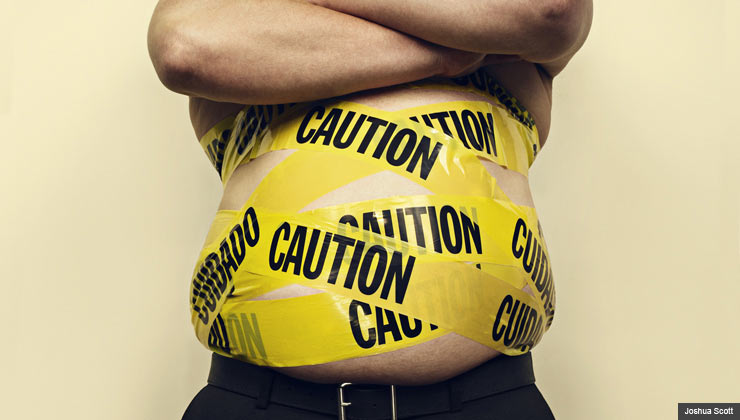AARP Hearing Center
A widening waistline is often the curse of middle age — and not just because it can be unsightly.


Those who store fat in their bellies are at higher risk of heart disease, stroke, diabetes and certain cancers.
And unfortunately, that's most of us. In the United States, more than 50 percent of men and 70 percent of women between ages 50 and 79 now have a condition as "abdominal obesity."
Your expanding middle carries two kinds of fat — subcutaneous fat you can see and pinch, and visceral fat, which surrounds the abdominal organs deep inside the body. Subcutaneous fat, which also is carried in the hips, thighs, arms and legs, may be unwanted, but it's not particularly dangerous.
Actively hazardous
Visceral, or belly, fat, on the other hand, is hazardous to your health. Numerous studies show a link between a large waist and a higher risk of death — even among people who aren't overweight. In fact, researchers now say your waist size, which generally reflects the amount of visceral fat you carry, may be a better predictor of disease than your BMI (body mass index).
"It's location, location, location that matters," in real estate, and that goes for fat, too, says Philipp Scherer, of the University of Texas Southwestern Medical Center in Dallas.
Until recently, scientists thought fat cells were simply storage units for excess calories. But researchers now consider visceral fat an active organ, like the liver or pancreas. "Our views of fat have changed over the last 15 years," says Scherer.
Visceral fat actually secretes hormones and lipids — such as triglycerides — that are harmful to the body, says David Cummings, M.D., professor of medicine at the University of Washington Medical School. It impairs the body's ability to use insulin, increasing the risk of type 2 diabetes. And it triggers the inflammation that can cause heart disease. Cummings says women's risk of heart disease rises after menopause to the level of men's because that's when women begin to accumulate belly fat.
There's also strong evidence visceral fat may cause colon cancer, according to the American Cancer Society. Moreover, this dangerous fat is associated with a higher risk of rectal, pancreatic, endometrial and postmenopausal breast cancer.

































































More on health
Monitoring Your Blood Pressure at Home
Why it's so important and how to do it right